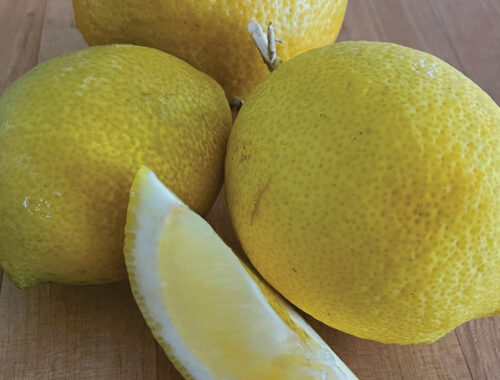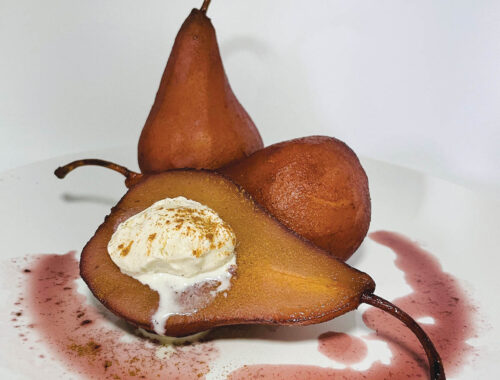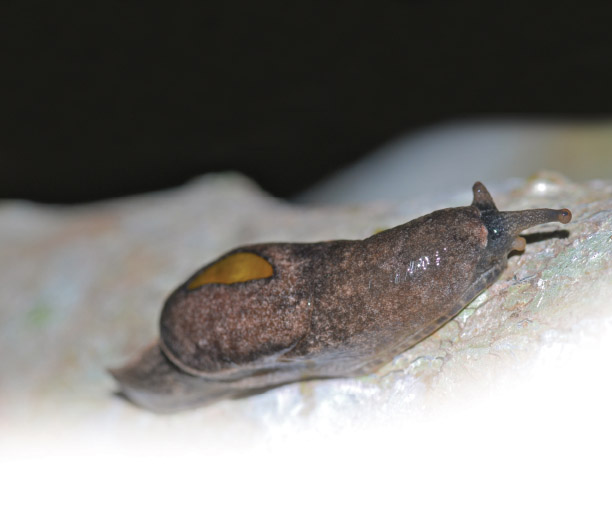
Island Stowaways: Invasive Pests on Hawai’i Island

By Brittany P. Anderson

Born from fire, Hawai‘i Island sprang from the bottom of the ocean. Cooling lava breached the surface of the sea, and our island was born. Plants and animals traveled thousands of miles to reach the new island. Beaten by wind and battered by waves, the first plants and animals arrived. Everything happened here in complete isolation away from the rest of the world.
That is not the Hawai‘i Island of today. As Hawai‘i Island grew in popularity and was settled by people from all over the globe, they brought non-native species, purposefully and accidentally, to the island. The term “invasive species” typically refers to a species that is both harmful to the environment, economy, or human health while also having been introduced with human assistance and not through their own movement.
Three prevalent invasive species that pose health risks to visitors and residents include rats, slugs, and mosquitos. These three nonnative species harbor diseases that spread to humans and are some of the most damaging invasive species on Hawai‘i Island. With a little awareness and a few tricks Hawai‘i Island visitors and residents can decrease their risk of exposure.
Rats of Hawai‘i Island
According to the US Fish & Wildlife Service, Polynesian rats first arrived in Hawai‘i with the Polynesians (approximately 400AD) while black and Norway rats arrived with Westerners in the 1780s. Rats can climb brick walls, trees, telephone poles and can fall from 50 feet without being injured. Most people associate rats with restaurants that are unsanitary, or homes fallen into disrepair. However, because of the readily available food sources—seeds, insects, fruits, food scraps, and eggs—their range is just about anywhere on the island. They have the ability to survive in a wide variety of climates like the Ka‘ū desert and rainy Hāmākua coast. Rats can even swim for miles, surviving for days in the water.
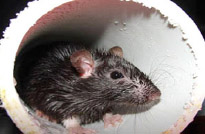
Rats carry an astounding 40 diseases that can be harmful to humans and animals. One of those diseases is rat-borne leptospirosis. Leptospirosis is a bacterial infection that, if not treated early, can lead to kidney failure and liver damage. To contract leptospirosis, all one needs is direct contact—through water, moist soil or food—with urine from infected animals. A common exposure scenario is that rats climb up a tree limb and scamper across the roof, urinating as they go. Rainwater runs over the roof into the gutter system that delivers water into the catchment tank. If a filter system fails or water is used without filtration it can lead to human infection. Even farmers working in a field where rats have urinated may become ill from leptospirosis.
The good news is that with awareness and early detection, leptospirosis can be easily treated. Limiting exposure to situations where leptospirosis could be present is key. Homeowners can take precautions by ensuring catchment tank filters are running properly, trimming branches near roofs, and wearing gloves when handling wet debris. Those exploring the island should ask before drinking from a tap, avoid pond water in the mouth, and wear proper shoes when hiking in muddy conditions.
Rats also harbor a parasite that is transmitted to humans by slugs—Rat Lungworm Disease.
Slugs of Hawai‘i Island
Slugs thrive in the wet environments of Hawai‘i Island. A 2008 study by biologists at UH Center for Conservation Research and Training believe invasive snails and slugs were brought to Hawai‘i Island inadvertently through horticulture imports.
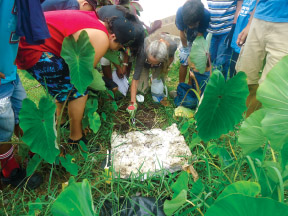
Slugs on Hawai‘i Island can carry the tropical disease Rat Lungworm Disease. This parasite is found in rats; it is passed on to snails and slugs through rat feces. Humans risk becoming infected after eating or drinking something that is contaminated by infected snails or slugs, or accidental ingestion of the tiny gastropods. We can also contract Rat Lungworm Disease through handling the infected snail or slug with bare hands.
UH Hilo College of Pharmacy Rat Lungworm Working Group estimates that 89–100% of the rats in the Hilo area are infected with Rat Lungworm Disease with an infection rate of 70–80% in semi-slugs. Semi-slugs have a small shell (about the size of a fingernail) on its back, which it cannot retract into like a snail.
Kay Howe, researcher with the UH Hilo College of Pharmacy Rat Lungworm Working Group, has dedicated her life to understanding the tiny parasite after her son contracted the disease and fell into a coma. The Rat Lungworm Working Group is working to develop a blood test that would diagnose Rat Lungworm. Because early symptoms of Rat Lungworm Disease are much like the flu, most people are either never diagnosed or are diagnosed much too late. Funding for this work has been little to nonexistent—which researchers hope changes soon.
Controlling slug populations is one of the most important steps in preventing the spread of Rat Lungworm Disease. Homeowners should take care to check under planters and tarps—using tongs to pick up any snails or slugs and drop them into a bucket of highly concentrated salt water. Keep any snails/slugs 24 hours in the saline solution. Once dead, you can dump out the contents, slugs and all, on a gravel or rocky surface where you don’t want or care if plants grow.
Semi-slugs like leafy greens such as lettuce, kale, and cabbages. Kay Howe promotes “Check. Clean. Cook.” as one of the most effective precautionary measures to avoid Rat Lungworm Disease. First, check leaves for unwanted pests—separate leaves from the stalk. Clean produce with lots of fresh water and agitate, then drying produce is best when possible. If the parasite is present it cannot survive without moisture. Cook produce when possible—Rat Lungworm cannot live on food cooked to 165°F. Alternatively, freezing for 24 hours will also kill parasites—perfect for green smoothies!
With a few extra steps around the house, you can increase your food safety and help keep Rat Lungworm Disease from spreading.
Mosquitos of Hawai‘i Island

An article in the Hawaiian Gazette from April 1903 attributes the ship Wellington as bringing mosquitoes to the island of Maui in 1826. The building of roads and inter-island commerce aided in the widespread distribution of mosquitoes to other islands. Today, it is hard to find an area that mosquitoes haven’t taken over.
Mosquito-borne diseases kill one million people a year globally. The Hawai‘i Island dengue fever outbreak of 2016 was the largest amount of locally-acquired dengue since 2011 with 264 confirmed cases. Since the outbreak, the Hawaii State Department of Health reports that no locally acquired dengue fever have been reported. The events of 2016 highlighted the importance of protecting against mosquito borne illnesses and the vulnerability of our island.
Eliminating breeding sites is one of the best protections we can control around our homes and businesses. Standing water in animal watering troughs, puddles, and palm fronds can easily become home to thousands of mosquito larvae. Change standing water at least twice a week and remove debris quickly. Tires, trashcans, and wheelbarrows can also retain water if not stored properly.
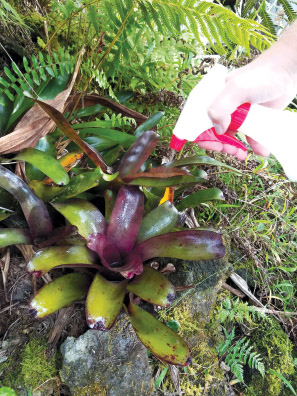
A common product added to ponds and water troughs is a biological mosquito control commonly called Mosquito Dunk. The active ingredient is a bacterium that is toxic to flies and mosquitos which, when present in water, prevents the mosquito larva from reaching maturity. The EPA cautions against human consumption of water with Mosquito Dunk, and it may also interfere with the life cycle of beneficial insects.
A more holistic approach is to add a little liquid dish soap to standing water. Spritzing bromeliads with soapy water or adding a few drops of liquid soap to a rain barrel will stop breeding in those areas. Adding fish that eat mosquito larvae to ponds is also a method of prevention.
Wear long pants and long sleeve shirts to protect yourself from being bitten by mosquitoes. The CDC recommends repellents with high levels of DEET, Picaridin, Bayrepel, oil of lemon eucalyptus and IR3535, which are all found in common brand name repellents. There are also numerous non-chemical repellents containing ingredients such as citronella, lemongrass, geranium, and lemon essential oils, which may be helpful. Remember to wash clothes and treated skin once you’re done, and always read the label before applying.
Invasive Species Council
In 2003, the Hawai‘i Island Invasive Species Council was established. It was formed to provide coordination, policy direction, and planning between state departments, federal agencies, and local initiatives to control and eliminate harmful invasive species and prevent other potentially harmful invasive species from being introduced. Without the dedicated work of UH at Hilo College of Pharmacy Rat Lungworm Working Group, especially Kay Howe, the disease could still be a medical mystery. The work of these organizations is undeniable, and the protection from these invasive species and the diseases they harbor starts with every one of us. ❖
Quick Guide to Preventing Rats
- Keep trees trimmed away from house
- Clean up pet food and store in sturdy containers with fitted lids
- Secure trash can lids
- Patch holes in screens
- Install springs or closers to exterior doors
- Call an exterminator at the first sign of rats
Quick Guide to Slug Control
- Place slugs and snails in saline bath: 7 cups of water and 1 cup of salt
- Never pick up a slug or snail with bare hands
- Do not dunk produce in vinegar—this may activate the parasite
- Cover glasses of water when working in the yard
- Reduce hiding spaces for slugs and snails
- Inspect catchment tanks and filters regularly
- Ask before drinking from the tap
Quick Guide to Mosquito Control
- Remove standing water
- Clean debris from yard including tires, appliances, and palm fronds
- Secure screens and patch holes
- Add liquid soap to rain barrels or spray on plants that may collect water
- Plant Citronella, lemongrass, lavender, mint, and rosemary near lanai to naturally deter mosquitos
To learn more about how you can protect yourself from invasive species log on to: dlnr.hawaii.gov/hisc/.
To donate to the continued research of Rat Lungworm Disease please see: giving.uhfoundation.org/.
